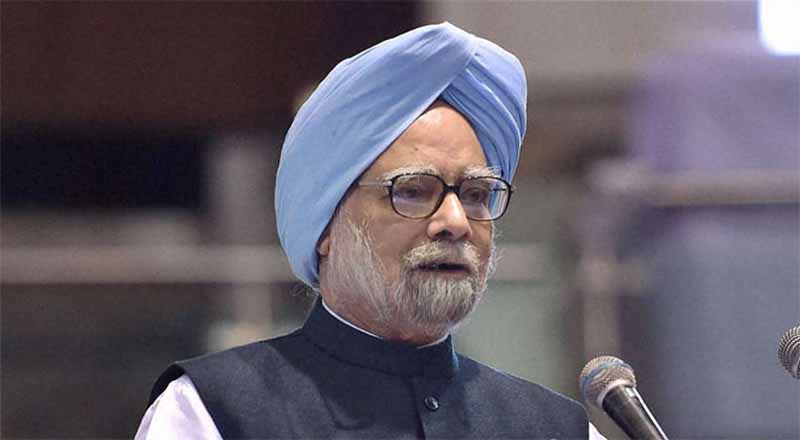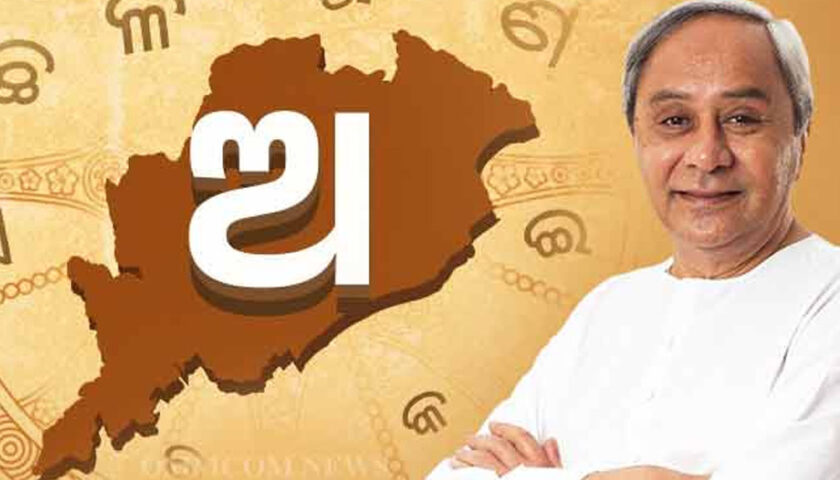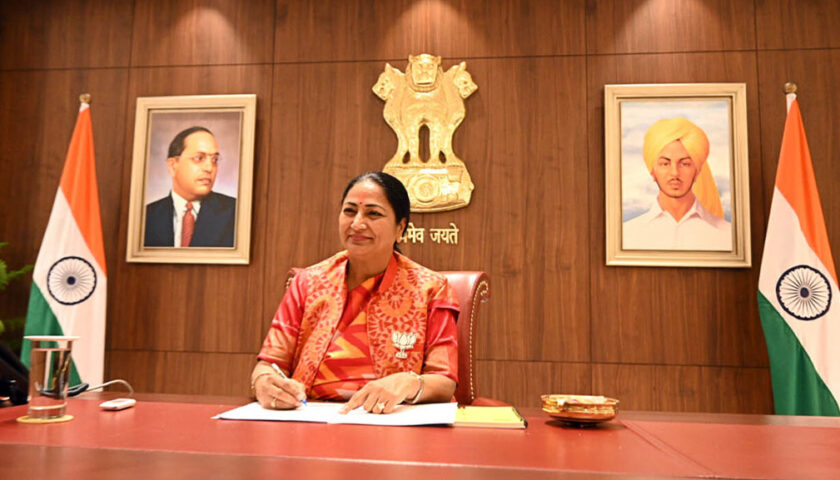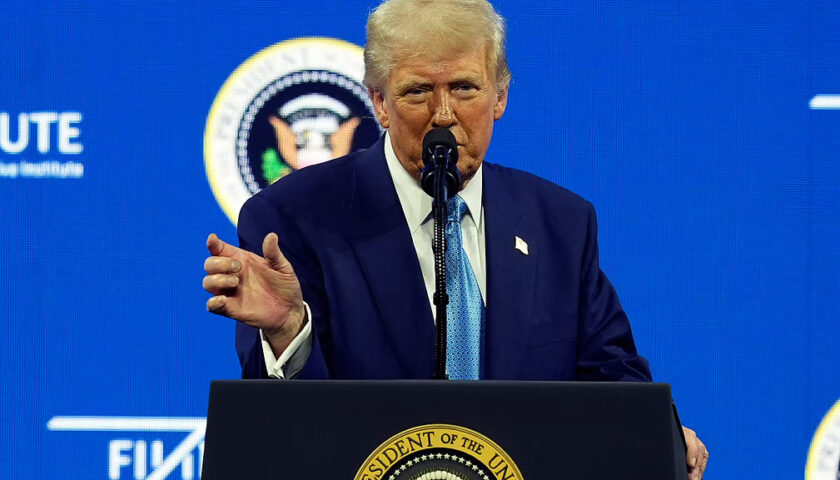The government must simplify and rationalise GST, kickstart rural consumption, revive agriculture and tackle the lack of credit for capital creation, says former PM
Former Prime Minister Manmohan Singh, an eminent economist himself, feels that the Narendra Modi-led government needs to come out of its habit of headline management and address the economic challenges which the country is facing today.
“We cannot afford to deny that India is facing an economic crisis. Already, a lot of time has been lost. Instead of wasting its political capital by adopting a sector-wise piecemeal approach, or on monumental blunders like demonetisation, the time has now come for the government to carry out the next generation of structural reforms,” Singh told BusinessLine in an interview.
Talking about the mandate which the Modi government has got, he said: “It is important to remember that this is a government with an overwhelming mandate, a full majority, not once, but twice in a row. When I served as the Finance Minister, or even as the Prime Minister, we did not have such huge mandates. Despite that, we achieved a lot, and successfully navigated through both the 1991 crisis and the 2008 global financial crisis.”
“I believe that we are entering a different kind of crisis now, a prolonged economic slowdown that is both structural and cyclical. The first step in a crisis is to acknowledge that we are facing one,” he stressed.
The government needs to address the issue in a transparent manner, listen to experts and all stakeholders with an open mind, and project serious intent to handle the crisis, Singh said, adding, “The government must instil confidence in the people and send a message to the world. Unfortunately, I do not yet see such a focussed approach from the Modi government.”
‘Simplify GST regime’
As a top priority, the Modi government must radically simplify and rationalise the GST regime, even if it means a loss of revenue in the short term, he said, adding, “Secondly, the government must find innovative ways to kickstart rural consumption and revive agriculture.” Excerpts from the interview:
On the one hand we see the Modi 2.0 government celebrating its first 100 days with a publicity blitz. On the other, you have described the state of the economy as “deeply worrying”. Is the situation really that serious? How long will it take to come out of this slowdown?
It is the Modi government’s prerogative to talk up its work. But the government can no longer be in denial about the economy. India is in the midst of a very worrying economic slowdown. Last quarter’s GDP growth rate of 5 per cent is the lowest it has been in six years. Nominal GDP growth is also at a 15-year low. This slowdown has affected multiple key sectors of the economy.
The automotive sector is in a crisis with a drastic decline in production. Over 3.5 lakh jobs have already been lost. Automotive hubs such as Manesar, Pimpri-Chinchwad and Chennai are experiencing a lot of pain. The ripple effects are now being felt across other allied industries. Even more worrying is the slowdown in truck production, which is a clear indicator of a slowing demand for goods and essential commodities. The overall slowdown has taken a toll on the service sector as well, which has experienced a slowdown in job creation since earlier this year.
The real estate sector has not been doing well for some time now, in turn affecting allied industries such as bricks, steel and electricals. The core sector has slowed down following a drop in the production of coal, crude oil and natural gas. The rural economy continues to suffer from inadequate crop prices. Unemployment is at a 45-year high for 2017-18. The overall situation is dire.
Consumption, which was a reliable engine to propel economic growth, has slowed to an 18-month low. The fact that sales of ₹5 biscuits have declined tells its own story. The drop in consumption is also affected by the limited availability of consumer loans and a drop in household savings. We are already experiencing the short-term effects of the resulting decline in demand.
In my estimate, it will take a few years to get out of this slowdown, provided the government acts sensibly now. We must not forget though, that it was the blunder of demonetisation, followed by the faulty implementation of GST, that triggered this slowdown. RBI has recently put out data that shows that gross bank exposure towards consumer goods loans has seen a steep and constant decline since late 2016 — that is, following demonetisation. Essentially, this data demonstrates the demand-side problems facing the Indian economy.
You have been consistently saying that demonetisation and GST are among the main reasons for this crisis — a view which former Chief Statistician Pronab Sen agreed with in a recent interview. What has been their overall impact on the economy? How have they affected employment and entrepreneurship?
Yes, he is right. This is a crisis triggered by a liquidity crunch. India has a substantial informal economy that runs on cash. A large portion of this involves legitimate activities that are below the tax threshold and therefore should not be thought of as part of the “black” economy. Agriculture, for example, constitutes around 15 per cent of GDP, runs mainly on cash, and is mostly tax-exempt. The farm economy was hit by the sudden withdrawal of cash from the system during demonetisation.
The Centre for Monitoring Indian Economy reported that 1.5 million jobs were lost in the unorganised sector during January-April 2017, just after demonetisation. This led to reverse migration to villages. This further led to a substantial increase in demand for MNREGA work. When the then Finance Minister (late Arun Jaitley) spoke of record Budget allocations to MNREGA, this was an acceptance of acute rural distress. We must remember that MNREGA is a demand-driven programme that people turn to when they have no other option.
We recently learned that corporate investments fell from 7.5 per cent of GDP to just 2.7 per cent of GDP in the year after demonetisation. It used to be as high as 15 per cent of GDP in 2010-11. This indicates that even the organised sector was not spared by the impact of demonetisation. Small businesses and the MSME sector were badly hit. Our worst fears have come true and the damage to growth caused by demonetisation appears to be prolonged and substantial.
Even as the aftershocks of demonetisation were being felt, the government introduced GST in such a haste that it delivered another huge blow to the economy. GST is a structural reform that we tried hard to introduce during the UPA government, so we are supportive of the reform. However, it was badly implemented. For example, sourcing from MSMEs took a hit as bigger companies preferred to purchase from suppliers who could provide GST receipts. In other cases, imports were preferred over sourcing from small Indian companies who barely qualified under the GST net. Entire supply chains were disrupted and we now know that Chinese imports have flooded our markets.
There are also reports of increased harassment of taxpayers by overzealous tax authorities. The complex, multiple-slab GST framework, the constant chopping and changing of rules, along with the teething pain, have also hurt small and medium businesses. Together with demonetisation, GST has caused substantial job losses, particularly to our most vulnerable workers.
The government has urged banks to grant loans to consumers and entrepreneurs to spur growth. But it has approved bank mergers also. Will mergers solve the problems in the banking sector?
The merger of public sector banks can help streamline and strengthen the banking sector. The question is whether this is the right time. The need of the hour is to facilitate credit flow and address the challenge of non-performing assets (NPAs). Instead of focussing their attention on these aspects, the mergers may divert bankers’ attention to integration challenges.
Mergers are complex affairs. The lack of any strategic plan to assist our banks during their transition will further aggravate this problem. In the long term, the current selection of banks to be merged also carries a risk of regional concentration. It may take many years before any benefits of the mergers become visible.
The government is also relying on the assumption that merging weaker banks with stronger ones will ameliorate any deficiencies and create larger, stronger banks. It is equally possible that the weaker banks will drag the stronger ones down with them, as they have weaker balance-sheets. In fact, some of the anchor banks themselves are experiencing a weak credit profile.
Among the banks chosen to be merged, one currently remains under the Prompt Corrective Action (PCA) framework and another two were removed (from PCA) as recently as February this year. The vulnerabilities of these banks will now extend to the anchor bank. Besides, a larger bank does not necessarily imply a stronger one simply by virtue of its size. We have not yet learnt all the lessons the 2008 global financial crisis taught us. The government has also failed to offer a solution for the structural issues that underlie problems in the public banking sector. This is an area requiring long-term policy reform. Regardless, the immediate focus must be to ensure an increase in credit flows in the economy.
How do you see the first term of the BJP government in terms of its fiscal policy and economic management?
The enduring legacies of the first term of the BJP government are demonetisation and GST, which have left the economy reeling even in the second term. The other major focus of the Modi government was inflation control. This has come at the cost of our farm sector. Agricultural incomes have fallen to a 14-year low, agri exports have contracted and imports have risen sharply. This also contributed to stagnant wages and the eventual fall in consumption, especially in our rural areas.
The Modi government was slow to deal with the NPA crises, which have now afflicted the NBFC sector, too. This has resulted in banks being reluctant to lend and entrepreneurs being reluctant to borrow and invest. Now, bank frauds have risen, too. The delayed action of the Modi government on this front is something which has proven costly for the country. While the Insolvency and Bankruptcy process is an important structural reform, in the current situation, it may not help the vast MSME sector.
Fiscally, the government laid a lot of emphasis on trying to stick to the targets laid out by the Fiscal Responsibility and Budget Management Act. But this led the government to aggressively levy taxes and cesses on petroleum products when international crude oil prices were low. Perhaps if the benefit of lower prices had been passed on to consumers, we may have avoided the slowdown that we are now experiencing.
Has the Congress been able to play the role of a constructive Opposition?
Absolutely. We have been consistent in our policy of reaching out and offering support wherever needed. Rahul Gandhi led the party in requesting the government to not implement a hasty GST. We requested the government to rationalise the tax slabs and the GST structure. From every platform, it was our constant effort to apprise the government of economic reality and offer constructive solutions. Eventually the government accepted many of our suggestions.
At the same time, when the government tried to reverse crucial pro-people measures like the Land Acquisition law, we stood our ground and the government finally understood the wisdom of our stand. Remember that many of the programmes that are now in place, like GST, were our ideas that were opposed by the BJP earlier, including by the then Gujarat Chief Minister, Narendra Modi. The Prime Minister also fiercely criticised MNREGA in Parliament, but now, seeing how important it is as a safety net, the government has allocated substantial sums towards it.
What advice would you offer Prime Minister Modi and the government for a way out of this economic crisis?
It is important to remember that this is a government with an overwhelming mandate, a full majority, not once, but twice in a row. When I served as the Finance Minister, or even as Prime Minister, we did not have such huge mandates. Despite that, we achieved a lot, and successfully navigated through both the 1991 crisis and the 2008 global financial crisis.
I believe that we are entering a different kind of crisis now, a prolonged economic slowdown that is both structural and cyclical. The first step in a crisis is to acknowledge that we are facing one. The government needs to address the issue in a transparent manner, listen to experts and all stakeholders with an open mind, and project serious intent to handle the crisis. The government must instil confidence in the people and send a message to the world. Unfortunately, I do not yet see such a focussed approach from the Modi government.
PM Modi and the government need to come out of their habit of headline management. We cannot afford to deny that India is facing an economic crisis. Already a lot of time has been lost. Instead of wasting its political capital by adopting a sector-wise piecemeal approach, or on monumental blunders like demonetisation, the time has now come for the government to carry out the next generation of structural reforms.
At the top of its priorities, the Modi government must radically simplify and rationalise the GST regime, even if it means a loss of revenue in the short term. Secondly, the government must find innovative ways to kickstart rural consumption and revive agriculture. Our 2019 Congress manifesto lays out some concrete options in this regard, including putting money back in the hands of the people through targeted transfers, and unshackling agricultural markets. Thirdly, the government must tackle the lack of credit for capital creation. It is not only the public sector banks, but also the NBFCs that are choked.
Fourthly, key job-intensive sectors like textiles, auto, electronics and affordable housing must be revived and assured priority lending, especially for MSMEs. Fifth, we need to find ways to address export markets that have opened up as a result of the trade wars between the United States and China. Lastly, there needs to be a credible roadmap for massive public infrastructure development, including through private investment. Some of this needs structural reforms.
The government must remember to address both the cyclical and structural problems. If these are addressed, we can get back on the high growth trajectory within the next three to four years.





